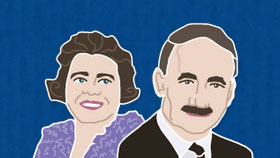
We’ve made planning your Australian history lessons easy with our rich online resources for Year 6 students. The Australian History Mysteries primary website includes a range of interactive case studies that have been designed specifically around the Australian Curriculum: history as outlined below:
Concepts for developing understanding
The content in the history sub-strand provides opportunities for students to develop historical understanding through key concepts including sources, continuity and change, cause and effect, perspectives, empathy and significance. The Year 6 curriculum moves from colonial Australia to the development of Australia as a nation, particularly after 1900. Students explore the factors that led to Federation and the different attitudes to Federation and citizenship at the time (continuity and change, cause and effect, perspectives). Through studies of people’s experiences of democracy and citizenship over time (perspectives, empathy), students come to understand the significance of events, ideas and people’s contributions in influencing development of Australia’s system of government (continuity and change, significance). Students learn about the way of life of people who migrated to Australia since Federation and their contributions to Australia’s economic and social development (significance, empathy). In learning about Australia as a nation, students compare a range of sources to determine points of view (sources, perspectives).
Inquiry Questions
- Why and how did Australia become a nation?
- How did Australian society change throughout the twentieth century?
- Who were the people who came to Australia? Why did they come?
- What contribution have significant individuals and groups made to the development of Australian society?
Key figures, events and ideas that led to Australia’s Federation and Constitution (ACHASSK134 – Scootle)
Year 6 Case Studies focus on the four main inquiry questions as set out in the national curriculum.
Who were the people who came to Australia and why did they come?
Specific activities/lessons include:
- Activity 1 How has migration helped shape Australia?
- Activity 2 Would you be a good migrant?
- Activity 3 Why do people migrate?
- Activity 4 Who has migrated to Australia since World War 2?
- Activity 5 Understanding stories of migration:
- Activity 6 Finding your own stories of migration to Australia
- Activity 7 What do museum objects tell us about migration?
- Activity 8 What does my community tell me about migration heritage?
How and why did Australia become a nation?
Specific activities/lessons include:
- Activity 1 Video Activity: How did Australia become a nation in 1901?
- Activity 2 Understanding Key Concepts: ‘Federation’ and ‘Constitution’
- Activity 3 Can you create the Australian nation?
- Activity 4 Where did the Constitution come from?
- Activity 5 Understanding Key Concepts: ‘Parliament’, ‘Government’ & ‘Law-making’
- Activity 6 What are the key features of the Australian system of law & government?
- Activity 7 Can you pass an Act of Parliament?
- Activity 8 Create your own crossword
What contribution have people made to the development of Australia?
Specific activities/lessons include:
- Activity 1 Who is ‘significant’ in your family?
- Activity 2 Introductory video: What contribution have significant individuals and groups made to the development of Australian society?
- Activity 3 Workers on the Snowy Mountain Scheme
- Activity 4 The Salvation Army
- Activity 5 Sir Edward ‘Weary’ Dunlop
- Activity 6 Dame Enid Lyons
- Activity 7 Investigating a significant group or individual of your own choice
How did Australian society change throughout the twentieth century to become more equal?
Specific activities/lessons include:
- Activity 1 Pre and post activity quiz
- Activity 2 What are citizenship rights?
- Activity 3 Introductory video about equal rights
- Activity 4 How did Indigenous Australians gain full citizenship rights over time?
- Activity 5A Children’s rights – the Stolen Generation
- Activity 5B Children’s rights – the Forgotten Australians and former child migrants
- Activity 6 How did women gain full citizenship rights over time?
- Activity 7 Migrant (including refugees) and citizenship rights over time in Australia
